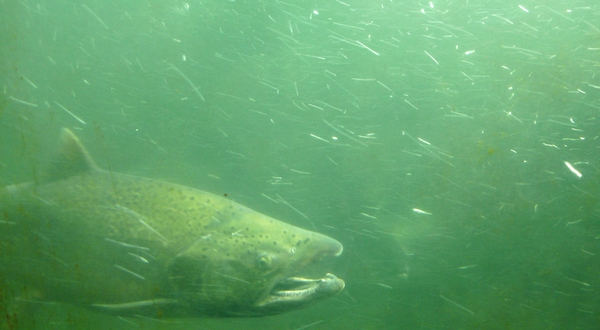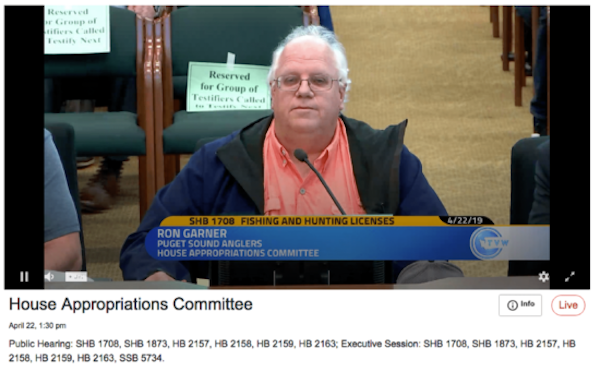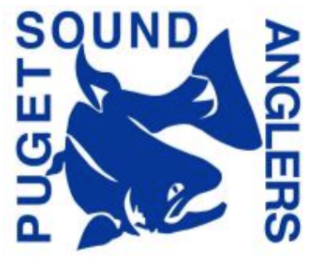
PSA Objects To Effort Duplication In Gov’s Salmon Plan
The Puget Sound Anglers State Board has come out against Governor Jay Inslee’s recently unveiled salmon recovery strategy, a $187 million set of policy and legislative proposals, because of its reinsertion of a third-party oversight panel into fishery and hatchery issues that are already reviewed via multiple canopies of expertise.

The venerable organization terms the Washington State Academy of Sciences’ inclusion as one of the “standout negative elements” of the plan announced near La Conner last month, and says it would “only increase bureaucratic requirements, resulting in greater attendant critical time delays and therefore significantly add to the cost of salmon recovery, but also duplicate much of the authority and science input already being provided by Tribal Nations and Federal, state and local government agencies.”
It’s a direct echo of PSA’s reasoning and support early last year for removing a similar group from the Washington Fish and Wildlife Commission’s unanimously approved updated hatchery policy that aims in part to increase salmon and steelhead production to benefit starving southern resident killer whales.
Hatchery management plans are drafted by WDFW and tribal nations such as the Lummis, Tulalips and others and then – in the case of federally listed stocks – reviewed and tweaked or approved by the National Marine Fisheries Service.
“There is no demonstrable need for this organization to be given the prominent role [as] currently envisaged,” writes Ron Garner, PSA board president, in a December 27 letter to Inslee on the academy’s job in the new proposal. “As the leading largest recreational fishing organization in Washington State, we cannot support this proposed strategy in its current state and will oppose it for the reasons given above and other shortcomings we have found.”
While offering to meet with the governor and/or his staff before the January 10 start of the state legislature, Garner says his organization also intends to share its concerns with lawmakers.

In emailed comments, he suggests that including WSAS in the new salmon plan represents an existential threat to the state’s fishing industries. It also makes him and another from that world wonder what’s going on behind the scenes in the Governor’s Office, which names Fish and Wildlife Commission members and now has two vacancies to fill, and what sort of support there is there these days for hatchery production, which underpins the lion’s share of state and tribal harvest.
Indeed, there are a lot of questions to mull, but the Washington Academy of Sciences element represents a relatively small but important part of Inslee’s salmon policy update proposal, which primarily focuses on addressing habitat issues but would also provide nearly $5 million for hatchery upgrades and $2.2 million to design and permit a new facility on the Deschutes near Olympia.
Contracted through the Governor’s Salmon Recovery Office, WSAS would be tasked to be “an independent science adviser panel to coordinate a statewide science, monitoring, accountability and adaptive management approach for salmon recovery.”
Per the plan, its role would be to help “Reaffirm key questions for salmon recovery; Identify clear objectives and measurable outcomes; Work with agencies to ensure data collection aligns with measurable outcomes; Establish clear triggers and benchmarks for our key strategies; Work with tribes and the state to compile data and reports on the progress; Develop and promote complementary, integrated and flexible approaches to collect, analyze and share monitoring information within and across sites, watersheds and regions; Provide agencies with leadership, coordination and technical assistance to deliver an adaptive management program.”
Some 20 months ago now Inslee actually vetoed creation of a similar panel. It was in a budget caveat inserted by lawmakers that would have required WDFW to convene an unfunded independent science review council to advise the agency and tribal salmon and steelhead managers on management decisions.
“The state and tribal co-managers already utilize a robust scientific process to manage salmon. This proviso adds unnecessary review and administrative burden on the co-managers,” Inslee wrote in his April 2020 veto message.
PSA’s Garner touched on that in his three-page letter last month.
“You helped us remove this and now here we are again. I can tell you that it is great honoring Lorraine Loomis with this act but can wholeheartedly tell you she would not approve of this 3rd party override as many of the other tribes have said too. We are in an era that Treaty Tribes and WDFW Commissioners are working together to build the best salmon policy yet so we can expedite the recovery of the salmon and prevent the extinction of the Killer Whales. The strategy as written would likely promote the opposite,” wrote Garner.
A large and key part of Inslee’s salmon proposal is called the Lorraine Loomis Act, named after the longtime Swinomish and tribal fisheries leader who passed away last August. It would dedicate $123 million to riparian protections, which was lauded by tribal representatives at December’s unveiling. No doubt restoring habitat is absolutely critical for recovering salmon and steelhead, but the pace of some key work is expected to take 90 years to complete, time which the Chinook-preferring orcas may not have.

Garner speaks from a unique position in Washington’s salmon and co-management world. In mid-2018 he had the extremely rare honor for a nontribal member – let alone a sport fisherman – of attending a Northwest Indian Fisheries Commission meeting, and is a nontribal core/leadership member of the Billy Frank Jr. Salmon Coalition, named after a key player in 1974’s Boldt Decision, Inslee’s Orca Task Force and what’s known as the Northern Tribal Hatchery Coalition.
He writes in his letter to Inslee that he and Loomis were “great friends” and they worked together to remove Hatchery Scientific Review Group, or HSRG, provisions from WDFW’s new hatchery policy last year. HSRG was mandated by Congress as part of hatchery reforms. In excising it, Fish and Wildlife Commission members called the new policy a “significant update and improvement to the previous policy” it superseded, while also stressing “wild fish are going to be taken care of.” It more closely aligns state and tribal production efforts and brings reviews back “in-house” instead of sent out to HSRG. The policy was subsequently targeted in a Wild Fish Conservancy lawsuit.
“I feel I have to say something as this is a great dishonor to Lorraine by letting a third party back in the door. While there are many good aspects of this strategy, please remove WSAS from this strategy,” Garner requests in his message to the governor.
That’s also the thrust of a June 30 letter from the Lummi Nation’s Natural Resources Department Director Merle Jefferson to Erik Neatherlin, who heads up the Governor’s Salmon Recovery Office, and JT Austin, Inslee’s senior natural resources policy advisor, as the salmon strategy was being shopped around.
“As you are aware from our numerous communications-verbal and written- we are deeply concerned about the State’s allowance of third-party NGO affiliates and stakeholders to provide misinformed and misguided views in an effort to influence Co-Management of hatcheries,” Jefferson writes. “We reiterate that hatchery fish are treaty fish per the Boldt Decision and that hatcheries and hatchery-origin salmon play the most important role in providing the mitigation for salmon productivity and abundance that has been lost from historical and ongoing habitat degradation. More now than ever, hatcheries will be needed to support our community’s needs particularly with the expected continued degradation from population growth and climate change and lack of a clear plan, adequate funding, and the political will to fix the problems.”
Still, Inslee’s December proposal has drawn attention for its emphasis on much-boosted habitat recovery funding, a distinct shortfall identified in the 2020 State of Salmon in Watersheds report, which states, “As of today, only $1 billion has been invested or just under 22 percent of the need – a funding rate that will not achieve recovery.”
That passage was called out in a recent article in The Columbian, which also quoted Steve Manlow, executive director of the Lower Columbia Fish Recovery Board, who noted the governor’s plan would “really accelerate” that effort.
“This is probably one of the most important opportunities we’re going to have to move recovery forward, one we haven’t seen in about 20 years,” Manlow told reporter Lauren Ellenbecker.
Manlow’s is one of eight regional boards that would coordinate work.
And the Northwest Sportfishing Industry Association points out in its weekly newsletter that another provision of Inslee’s plan is a voluntary gillnet license buyback program to reduce the size of the nontreaty commercial fleet on the Columbia and transition it to more selective gear.
However, Garner says that that could lead to issues of too many hatchery fish straying onto wild spawning grounds and lead federal overseers to require production reductions.
Meanwhile, a bill prefiled for the upcoming legislative session puts “improving statewide coordination in support of anadromous fish recovery” in its sights. Under HB 1653, “an independent science panel shall provide scientific review and oversight” and the bill also declares it the state’s goal to “support the recovery and enhancement of salmon and steelhead stocks in order to support Washington’s tribal treaty obligations, support nontribal commercial and recreational fisheries, and achieve the delisting and recovery of threatened or endangered salmon and steelhead runs under the federal endangered species act.”
It is sponsored by Reps. Debra Lekanof, Cindy Ryu, Mike Chapman and Alex Ramel, Pugetropolis Democrats, with Chapman also the chair of the House natural resources committee.

